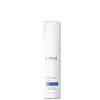What's inside
What's inside
 Key Ingredients
Key Ingredients

 Benefits
Benefits

 Concerns
Concerns

 Ingredients Side-by-side
Ingredients Side-by-side

Water
Skin ConditioningEthylhexyl Palmitate
EmollientIsopropyl Myristate
EmollientGlyceryl Stearate
EmollientCetyl Alcohol
EmollientPropanediol
SolventGlycerin
HumectantPEG-40 Stearate
EmulsifyingSorbitan Tristearate
EmulsifyingPhenoxyethanol
PreservativeDimethicone
EmollientSodium Benzoate
MaskingAllantoin
Skin ConditioningUrea
BufferingCaprylyl Glycol
EmollientChlorphenesin
AntimicrobialSaccharide Hydrolysate
HumectantParfum
MaskingLinalool
PerfumingHexyl Cinnamal
PerfumingLactic Acid
BufferingPotassium Sorbate
PreservativeAlanine
MaskingGlycine
BufferingMagnesium Aspartate
Skin ConditioningCreatine
Skin ConditioningAloe Barbadensis Leaf Juice
Skin ConditioningTocopherol
AntioxidantMaris Aqua
HumectantWater, Ethylhexyl Palmitate, Isopropyl Myristate, Glyceryl Stearate, Cetyl Alcohol, Propanediol, Glycerin, PEG-40 Stearate, Sorbitan Tristearate, Phenoxyethanol, Dimethicone, Sodium Benzoate, Allantoin, Urea, Caprylyl Glycol, Chlorphenesin, Saccharide Hydrolysate, Parfum, Linalool, Hexyl Cinnamal, Lactic Acid, Potassium Sorbate, Alanine, Glycine, Magnesium Aspartate, Creatine, Aloe Barbadensis Leaf Juice, Tocopherol, Maris Aqua
Ingredients Explained
These ingredients are found in both products.
Ingredients higher up in an ingredient list are typically present in a larger amount.
Glyceryl Stearate is a mix of glycerin and stearic acid.
It is used to stabilize the mixing of water and oil ingredients. By preventing these ingredients from separating, it can help elongate shelf life. It can also help thicken the product's texture.
As an emollient, it helps soften skin and supports barrier-replenishing ingredients.
In cosmetics, Glyceryl Stearate is often made from vegetable oils or synthetically produced.
This ingredient may not be fungal-acne safe
Fun fact: The human body also creates Glyceryl Stearate naturally.
Learn more about Glyceryl StearatePhenoxyethanol is a preservative that has germicide, antimicrobial, and aromatic properties. Studies show that phenoxyethanol can prevent microbial growth. By itself, it has a scent that is similar to that of a rose.
It's often used in formulations along with Caprylyl Glycol to preserve the shelf life of products.
Water. It's the most common cosmetic ingredient of all. You'll usually see it at the top of ingredient lists, meaning that it makes up the largest part of the product.
So why is it so popular? Water most often acts as a solvent - this means that it helps dissolve other ingredients into the formulation.
You'll also recognize water as that liquid we all need to stay alive. If you see this, drink a glass of water. Stay hydrated!
Learn more about Water